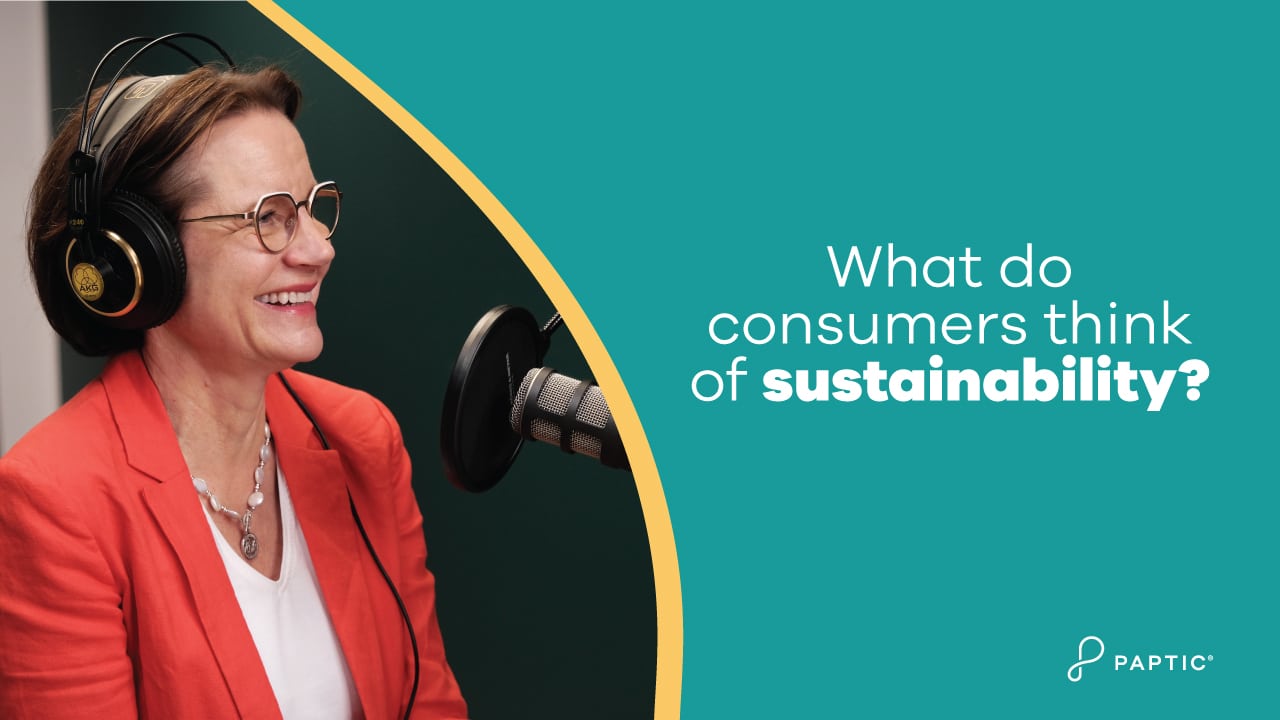If the preview does not load, you can find the episode here!
The latest episode of Paptic’s “Unboxing Sustainability” podcast features Riikka Joukio, the Executive Vice President in charge of corporation responsibility and public affairs at the Finnish trade sector company Kesko.
In this episode, Paptic’s Hanna Kalliomäki and Riikka Joukio talk about the role of retailers in promoting sustainability, the sustainability efforts of retailers and consumers, and the impacts of the new EU sustainability regulations on the retail trade sector.

Trade sector companies sell a wide variety of items, and nearly all of them have some kind of packaging. Today, one of the main sustainability goals among retailers is to reduce the use of plastics and promote more sustainable packaging solutions that are for example recyclable at scale.
Replacing plastic packaging with renewable and recyclable materials can have a significant impact on a company’s overall plastic consumption. At Kesko, for example, replacing the plastic buckets previously used to transport Kesko’s own-brand tulips with recyclable cardboard boxes allowed the company to reduce the use of plastic by a whopping 27 tonnes per year.
However, while the use of plastics is actively being reduced, plastic is a light, flexible, and inexpensive packaging material that will most likely be used in the future as well. The important thing is to make sure that it is properly recycled, and the plastic recycling system is still in the development phase. However, retailers can contribute to this goal by adding clear sorting instructions to products or by providing waste sorting stations and bottle collection points at their store locations.
Sustainability efforts among consumers
Sustainability has become an increasingly important factor for consumers in recent years. For example, in Finland, consumers typically contribute to sustainability by sorting household waste, minimizing electricity consumption, and preventing food waste.
Currently, one of the most prominent sustainability trends in Finland is buying local products to support Finnish agriculture and to ensure the security of supply in the future.
However, consumer behavior is also influenced by the economic situation. Purchasing power is currently low due to inflation, and consumers are paying more attention to prices and planning their meals and weekly groceries more carefully. Considering these trends, running promotions and special offers can be a great way to encourage sustainable consumption among customers.
In addition to providing local products, special offers, and recycling points, there are also many other ways to help consumers make more sustainable choices. One alternative is to take advantage of digital solutions. In today’s world, it’s also possible to guide and support consumers in making sustainable choices through digital tools and applications. At Kesko customers can use a mobile application to calculate the carbon footprint of their shopping cart items and track their consumption of, for example, vegetables or domestic products.
Building a better future together
Ultimately, building a sustainable future requires both collective efforts and individual actions. For retailers, navigating the ever-changing EU sustainability regulations and ensuring compliance with social and environmental sustainability standards and transparency throughout the supply chain requires cooperation between industry players and close communication with suppliers.
On an individual level, sustainable development can be promoted with various measures. For example. it is important to consume sustainably, reuse when possible, and recycle – to make sure that the materials circulate and stay in the loop. Riikka adds that one important measure would be to avoid littering in order to return materials to circulation and reduce microplastic pollution in the environment.





